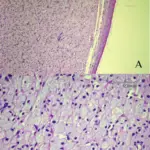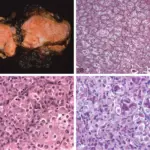The solitary fibrous tumor is a fibroblastic tumor.
What is the Pathology of Solitary Fibrous Tumor?
The pathology of solitary fibrous tumor is:
-Etiology: The cause of the solitary fibrous tumor is unknown.
-Genes involved: NAB2-STAT6.
-Pathogenesis: The sequence of events that lead to the solitary fibrous tumor is the paracentric inversion involving chromosome 12q, resulting in NAB2-STAT6 gene fusion.
-Histology: The histology associated with solitary fibrous tumors shows ovoid to fusiform spindle cells with indistinct cell borders arranged haphazardly or in short, ill-defined fascicles.
How does Solitary Fibrous Tumor Present?
Patients with solitary fibrous tumors typically affect both males and females at 40-70 years of age. The symptoms, features, and clinical findings associated with solitary fibrous tumors show painless lump with slow growth.
How is Solitary Fibrous Tumor Diagnosed?
A solitary fibrous tumor is diagnosed by histologic findings. Imaging features are non-specific.
How is Solitary Fibrous Tumor Treated?
Solitary fibrous tumor is treated by surgical resection.
What is the Prognosis of Solitary Fibrous Tumor?
The prognosis of solitary fibrous tumors is poor with a 10 – 30% (local or distant) recurrence rate.



